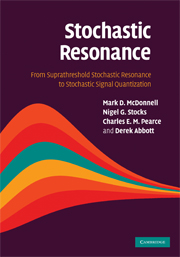Introduction to Nonlinear Science
One of the most unexpected results in science in recent years is that quite ordinary systems obeying simple laws can give rise to complex, nonlinear or chaotic, behavior. In this book, the author presents a unified treatment of the concepts and tools needed to analyze nonlinear phenomena and to outline some representative applications drawn from the physical, engineering, and biological sciences. Some of the interesting topics covered include: dynamical systems with a finite number of degrees of freedom, linear stability analysis of fixed points, nonlinear behavior of fixed points, bifurcation analysis, spatially distributed systems, broken symmetries, pattern formation, and chaotic dynamics. The author makes a special effort to provide a logical connection between ordinary dynamical systems and spatially extended systems, and to balance the emphasis on chaotic behavior and more classical nonlinear behavior. He also develops a statistical approach to complex systems and compares it to traditional deterministic phase space descriptions. This book is suitable for senior undergraduate and graduate students taking nonlinear courses from many different perspectives including physics, chemistry, biology, and engineering.
Reviews & endorsements
"...this book can be recommended to graduate students and researchers for independent study as well as being a basis for an advanced undergraduate course." Moshe Gitterman, Journal of Statistical Physics
"What has been achieved is success in placing the key ideas involved within a wide framework involving many different parts of science. In this the author is to be congratulated..." Eric Renshaw, Bulletin of Mathematical Biology
"Introduction to Nonlinear Science will be a very valuable addition to the libraries of serious nonlinear dynamics students, and the author is to be commended for making an important contribution to the field." D.T. Mook, Applied Mechanics Review
Product details
June 1995Paperback
9780521467827
272 pages
246 × 191 × 20 mm
0.49kg
Available
Table of Contents
- Preface
- 1. Nonlinear behavior in the physical sciences and biology: some typical examples
- 2. Quantitative formulation
- 3. Dynamical systems with a finite number of degrees of freedom
- 4. Linear stability analysis of fixed points
- 5. Nonlinear behavior around fixed points: bifurcation analysis
- 6. Spatially distributed systems, broken symmetries, pattern formation
- 7. Chaotic dynamics
- Appendices
- References
- Index.





